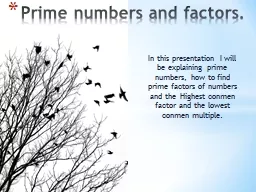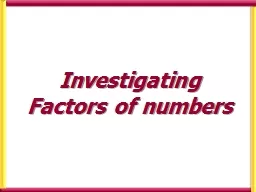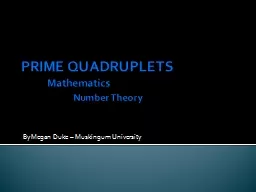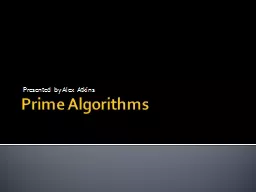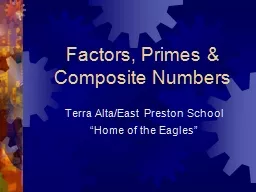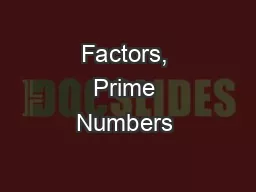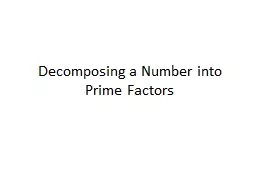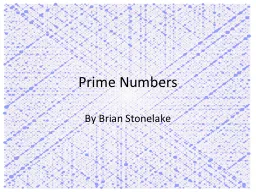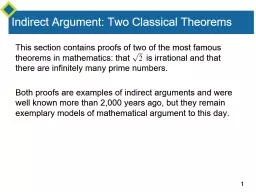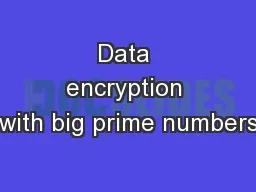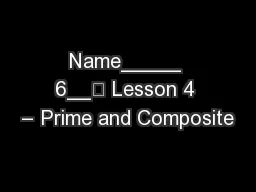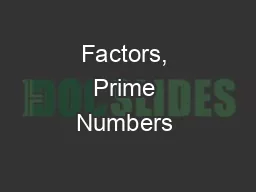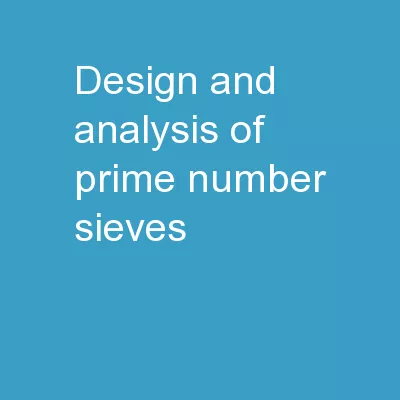PPT-In this presentation I will be explaining prime numbers, ho
Author : tatiana-dople | Published Date : 2016-03-07
Prime numbers and factors Prime numbers Prime numbers divide by themselves and one So 331or 13131 But 16 divides 161 and 82 and 44 So you see that prime numbers
Presentation Embed Code
Download Presentation
Download Presentation The PPT/PDF document "In this presentation I will be explainin..." is the property of its rightful owner. Permission is granted to download and print the materials on this website for personal, non-commercial use only, and to display it on your personal computer provided you do not modify the materials and that you retain all copyright notices contained in the materials. By downloading content from our website, you accept the terms of this agreement.
In this presentation I will be explaining prime numbers, ho: Transcript
Download Rules Of Document
"In this presentation I will be explaining prime numbers, ho"The content belongs to its owner. You may download and print it for personal use, without modification, and keep all copyright notices. By downloading, you agree to these terms.
Related Documents

